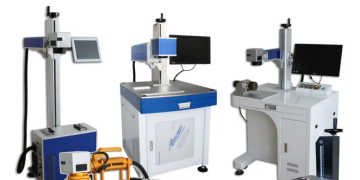The purpose of maintenance onboard a ship is to get the repair and maintenance work done with minimum costs in the least amount of time. Maintenance plans, however, can vary depending on the type of vessel and size of your fleet, whether it’s one vessel or a hundred. That said, appropriate maintenance is essential to any mechanical equipment or machinery going.
Regardless of the size and structure of any machine, proactive and efficient maintenance can help with favorable outcomes and prolonged life. Maintenance on a ship keeps the machinery running smoothly and up-to-date.
In today’s article, we’ll take a look at three ways of maintenance that can be carried out on ships.
Usually, maximum machines are located in a ship’s engine room, and crew members and engineers carry out maintenance tasks for safe and efficient operation. Every machinery on a ship requires maintenance that has to be conducted at regular intervals.
Back in the day, a ship used to carry large numbers of crew members and engineers. That is why maintenance tasks did not require too much time and could be performed more effortlessly. However, the number of engineers and crew members began to reduce dramatically as more advanced machinery came into existence that requires fewer men to operate.
At present, no matter how advanced the machine equipment is, it still requires proper maintenance. Today, it is not unusual to see 3-4 engineers onboard a ship. Even with fewer men onboard, the time needed to carry out maintenance has also decreased. However, maintenance still requires time and labor, and it can be arduous to carry out with fewer crew members.
Therefore, planning maintenance ahead of time is crucial so that the machine can be overhauled and maintained properly. So let’s not waste any more time and learn the types of maintenance that can be carried out on ships.
Maintenance Types
Preventative maintenance
Preventative maintenance is known as planned or scheduled maintenance. In this type of program, maintenance is usually carried out on machine run time, for example, 5000 hrs or 10,000 hrs, or sometimes performed yearly or every six months. Maintenance investigations are carried out irrespective of the condition of the equipment. Even if parts were working, they will be replaced as scheduled if it was already in the plan.
Some maintenance management tools like CMMS software solutions can make the process more efficient and convenient.
Breakdown maintenance
This is the type of maintenance that is carried out when a machine or piece of equipment fails or breaks down. This option should always be a no-go, but in some cases, breakdown maintenance may be better than scheduled maintenance. Breakdown maintenance is usually more costly. The only advantage in breakdown maintenance is that it means that equipment was utilized to its full potential. You are more likely to keep your vessel in proper working order before going on out onto the sea. Therefore, it is always advisable to keep your equipment and machine in good working condition through planned maintenance.
Condition-based maintenance
This type of maintenance involves monitoring the real-time condition of a machine or equipment through visual inspections, scheduled tests, and sensor devices to determine what and when maintenance tasks need to be performed. This type of maintenance requires experts on board as wrong interpretation may cause more harm than good. Condition-based maintenance tasks are usually carried out on sophisticated and critical equipment.
Final Words
It is essential to note that several aspects should be considered when making a maintenance plan, starting from the International Safety Management Code (ISM) to the guidelines set by the machine manufacturer.
As already mentioned, the purpose of a maintenance plan is to get the work done in the least amount of time with minimum money spent. But the key to productive maintenance is efficient planning and proper usage of resources.





















































